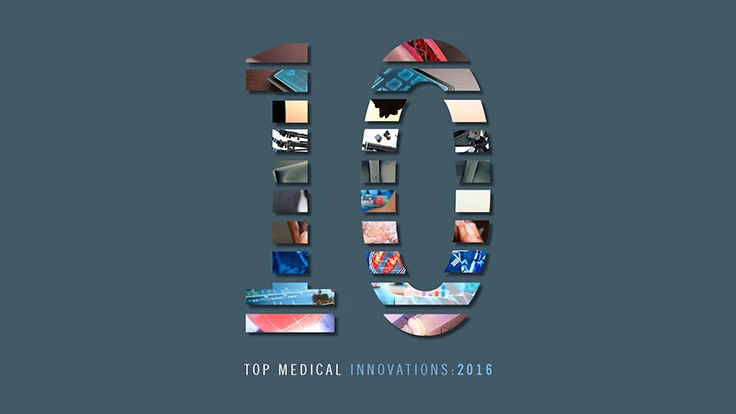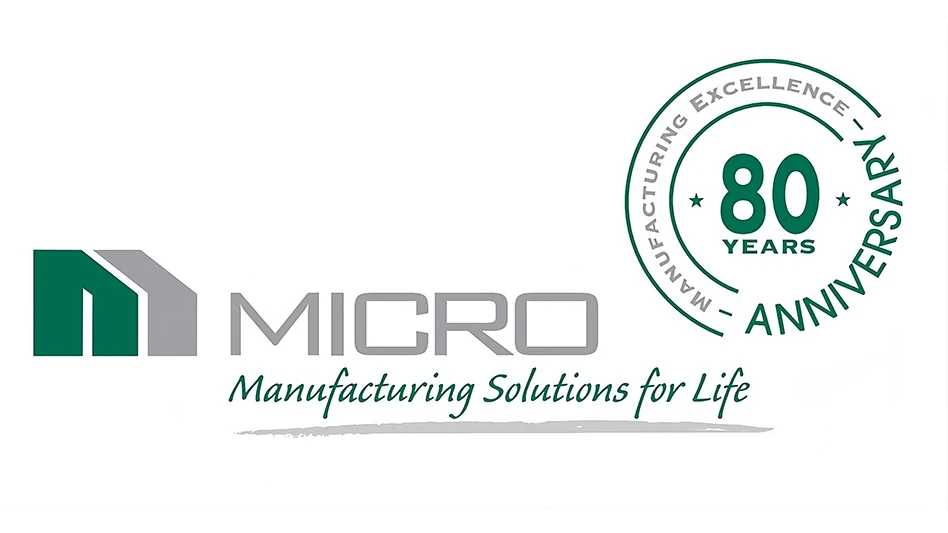
Cleveland, Ohio - Cleveland Clinic's culture of innovation naturally fosters a good deal of discussion about new game changing technologies and which ones will have the greatest impact each year. The passion of clinicians and researchers for getting the best care for patients drives a continuous dialogue on what state-of-the art medical technologies are just over the horizon.
Here is what clinical leaders are saying to each other and what innovations they feel will help shape healthcare over the next 12 months.
#1 Vaccines to Prevent Public Health Epidemics
The number one spot in the 2015 Top Ten Medical Innovation goes to the scientists, physicians and public health officials who are developing safe, efficient and effective vaccines faster than ever to prevent disease epidemics. These efforts were given new urgency by the 2014 Ebola epidemic in Africa and of bacterial meningococcal (Meningococcal B) outbreaks in the United States. In both cases, physicians, scientists, companies and government agencies innovated with unprecedented speed to move new vaccines from laboratories to clinical testing in large populations. Read More...
#2 Genomics-based Clinical Trials
Genomics-based clinical trials are speeding the development of new targeted therapies. They sort potential research participants by genetic criteria, and match them with the experimental therapy that targets the particular molecule associated with their disease. Genetic profiling shortens the time it takes to enroll patients and increases the chance that patients will benefit from the therapy being studied. Read more...
#3 Gene Editing using CRISPR
Not long ago, the ability to alter DNA of any organisms, including human embryos, was an idea thought up by science fiction authors and movie directors. A new technique, called CRISPR, however is proving not only that it’s possible, but that it can be done very easily and at very little cost when compared to prior gene editing attempts. And as a result- it is being adopted in labs everywhere. Read more...
#4 Water Purification Systems for Prevention of Infectious Diseases
In the developing world, it is not uncommon to see sewage pile up in the streets with nowhere to go but into the local drinking water. This is an issue that contributes to more than 10% of the disease burden on the entire world. It is estimated that more than 700 million people in the world are drinking unsafe water every day, and according to the World Health Organization, more than a million children under the age of five in developing nations die each year as a result of contaminated water and poor sanitation. Read more...
#5 Cell-free Fetal DNA Testing
The market in pregnancy wellness has grown to almost $2 billion as new parents increasingly invest in books, diets, and yoga classes all dedicated to ensuring their baby will be as healthy as possible when arriving. The potential for genetic diseases, like Down’s Syndrome, Edwards Syndrome, and Patau Syndrome however, are out of the control of the mother, and can therefore cause a great deal of stress, especially due to the vague and uncertain results of present tests. Read more...
#6 Cancer Screening via Protein Biomarker Analysis
To understand the risk of cancer, scientists for years have focused narrowly on changes in the concentration of a single protein in biological fluids such as blood or urine or, alternatively, on genetic mutations. However, relatively poor sensitivity, specificity and predictive value generally limit the diagnostic accuracy and clinical utility of these tests. Read more...
#7 Naturally Controlled Artificial Limbs
There have been numerous innovations in prosthetics over the years that have been able to mimic the natural movement, and provide a large boost to the quality of life of amputees and paralyzed individuals. But with over 6 million people paralyzed and 100,000 Americans living with an upper arm amputation, there is a large patient population that is paying close attention to an innovation that will yet again revolutionize the use of prosthetics. Read more...
#8 First Treatment for HSDD
Sexual desire is different from sexual performance. There are several medications that address male sexual dysfunction. But none that address loss of sexual desire in women. Until now. In 2015, the FDA approved flibanserin, the first medication designed to treat female hypoactive sexual desire disorder (HSDD), or loss of sexual desire in premenopausal women. Read more...
#9 Frictionless Remote Monitoring
The wearable technology market has been skyrocketing in recent years. A recent study has estimated that 20% of American adults are wearing a device that collects data on anything from exercise and sleep habits to heart rate and blood pressure. The wide adoption has led to excitement about a potentially healthier population in the coming years. In addition to wellness, there are millions of sick patients that can benefit directly from wearables that are monitoring data at every breath, bead of sweat, or chemical change in the body. In many cases the reaction to these alterations can mean life or death. Read more...
#10 Neurovascular Stent Retrievers
The immediate hours after suffering an ischemic stroke are critical. The clot that occurs within a blood vessel must be removed within 3-6 hours in order to prevent long term disability, brain damage or death. For years, the only FDA-approved treatment for removing clots has been a tissue plasminogen activator, or tPA. The medicine, delivered intravenously, travels to the clot and dissolves and restores blood flow to the brain. When an occlusion forms in a major vessel, however, tPA has been effective in less than a third of all patients. Scientists for years have been looking for reinforcements that could aid tPA in eliminating main-stem clots as quickly and as safely as possible. The result is the Stent Retriever. Read more...
Source: Cleveland Clinic
Latest from Today's Medical Developments
- Surface Roughness, Texture, and Tribology Short Course
- There’s still time to register for our January 22 additive manufacturing webinar!
- EMO: Made for game changers
- Thomson’s encoder options for stepper motor linear actuator online selection tool
- BD boosts US manufacturing of critical medical devices
- Aerotech’s HexGen HEX150-125HL miniature hexapod
- World-leading medical device supplier via a new merger
- Edge Technologies' FMB Turbo 3-38 RS bar feeder





